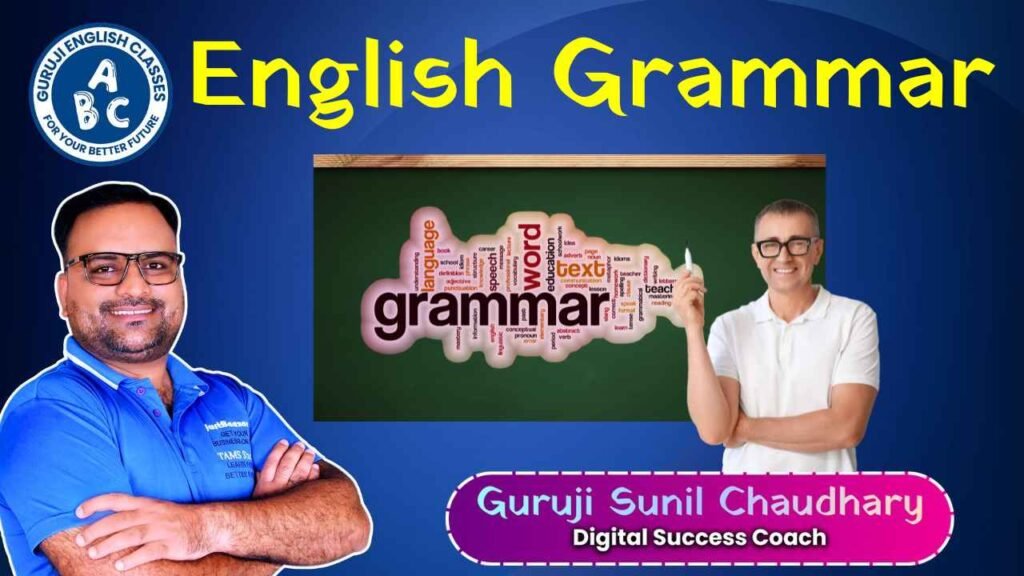Language is a powerful tool, and words are its building blocks. Every word in a sentence has a specific function, and these functions are categorized into what we call Parts of Speech. Understanding the parts of speech helps us use words correctly and craft meaningful sentences.

There are eight primary parts of speech in the English language:
- Noun
- Pronoun
- Verb
- Adjective
- Adverb
- Preposition
- Conjunction
- Interjection
Let’s explore each one in detail!
1. Noun: The Name of Everything
A noun is a word that represents a person, place, thing, or idea. It serves as the subject or object in a sentence.
Types of Nouns:
- Proper Noun – Names a specific person, place, or thing (e.g., New York, Shakespeare, Tesla).
- Common Noun – Refers to general items or concepts (e.g., city, author, car).
- Concrete Noun – Something tangible that can be sensed (e.g., apple, table, dog).
- Abstract Noun – Represents ideas, feelings, or concepts (e.g., love, honesty, wisdom).
- Collective Noun – Refers to a group of people or things (e.g., team, herd, bunch).
Example Sentences:
- The teacher gave us homework. (Common noun)
- Mount Everest is the highest peak in the world. (Proper noun)
2. Pronoun: The Replacement for Nouns
A pronoun is a word used in place of a noun to avoid repetition.
Types of Pronouns:
- Personal Pronouns – Represent people or things (e.g., I, you, he, she, it, we, they).
- Possessive Pronouns – Show ownership (e.g., mine, yours, his, hers, ours, theirs).
- Reflexive Pronouns – Used when the subject and object are the same (e.g., myself, yourself, himself).
- Demonstrative Pronouns – Point out specific things (e.g., this, that, these, those).
- Relative Pronouns – Connect clauses (e.g., who, whom, whose, which, that).
- Interrogative Pronouns – Used to ask questions (e.g., who, what, which).
Example Sentences:
- She is my best friend. (Personal pronoun)
- This is my book, and that is yours. (Possessive pronoun)
3. Verb: The Action or State of Being
A verb expresses action or a state of being in a sentence.
Types of Verbs:
- Action Verbs – Show an action (e.g., run, jump, write).
- Linking Verbs – Connect the subject to a state or condition (e.g., is, am, are, seem, become).
- Helping (Auxiliary) Verbs – Assist the main verb (e.g., have, has, will, can, should).
- Transitive Verbs – Require a direct object (e.g., She wrote a letter.).
- Intransitive Verbs – Do not require an object (e.g., He sleeps peacefully.).
Example Sentences:
- She writes a poem every day. (Action verb)
- He is very intelligent. (Linking verb)
4. Adjective: The Word that Describes a Noun
An adjective describes or modifies a noun or pronoun by giving more information about it.
Types of Adjectives:
- Descriptive Adjectives – Describe qualities (e.g., beautiful, tall, red).
- Quantitative Adjectives – Indicate quantity (e.g., some, many, few).
- Demonstrative Adjectives – Point out something (e.g., this, that, these, those).
- Possessive Adjectives – Show ownership (e.g., my, your, his, her, our).
- Interrogative Adjectives – Used in questions (e.g., which, what, whose).
Example Sentences:
- She wore a beautiful dress. (Descriptive adjective)
- I have two apples. (Quantitative adjective)
5. Adverb: The Modifier of Verbs, Adjectives, and Other Adverbs
An adverb describes a verb, an adjective, or another adverb.
Types of Adverbs:
- Manner – Describes how an action is performed (e.g., quickly, happily, silently).
- Time – Describes when something happens (e.g., now, later, yesterday).
- Place – Describes where something happens (e.g., here, there, everywhere).
- Frequency – Describes how often something happens (e.g., always, never, sometimes).
Example Sentences:
- She sings beautifully. (Manner)
- He arrived early. (Time)
6. Preposition: The Linker of Words
A preposition shows the relationship between a noun (or pronoun) and other words in a sentence.
Common Prepositions:
- Place – in, on, under, beside, near
- Time – before, after, during, at, since
- Direction – to, from, into, onto
Example Sentences:
- The book is on the table.
- She went to the market.
7. Conjunction: The Connector of Words and Clauses
A conjunction connects words, phrases, or clauses.
Types of Conjunctions:
- Coordinating Conjunctions – Join equal parts (e.g., and, but, or, nor, yet).
- Subordinating Conjunctions – Connect a dependent clause to an independent clause (e.g., because, although, while).
- Correlative Conjunctions – Work in pairs (e.g., either…or, neither…nor, not only…but also).
Example Sentences:
- I like coffee but not tea.
- She stayed at home because she was sick.
8. Interjection: The Expression of Emotion
An interjection is a word or phrase that expresses strong emotion or surprise.
Common Interjections:
- Wow! Oh! Ouch! Hurray! Alas!
Example Sentences:
- Wow! That was an amazing performance!
- Ouch! I hurt my foot!
Conclusion
Understanding parts of speech is essential for mastering English grammar. By recognizing how each word functions, we can construct sentences correctly and express our thoughts clearly. Whether writing or speaking, using the right words in the right way enhances communication and comprehension.
Would you like a quiz or exercises to test your understanding? Let me know! 🚀








